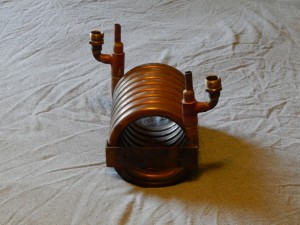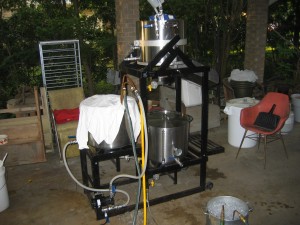This is the (second half of the) eighth installment in the All-Grain Brew Day Walkthrough, which started with a post on strike water preparation.
 After the wort has been boiled, it’s time to chill it. In the first part of this discussion of wort chilling, I explained how to chill the wort using an immersion chiller. Today, I will discuss counterflow chiller and plate chillers.
After the wort has been boiled, it’s time to chill it. In the first part of this discussion of wort chilling, I explained how to chill the wort using an immersion chiller. Today, I will discuss counterflow chiller and plate chillers.



Recent Comments